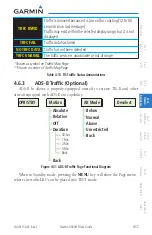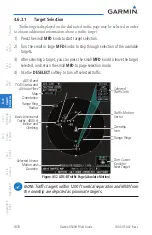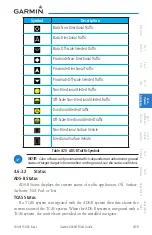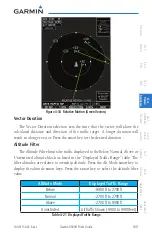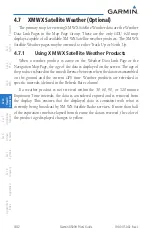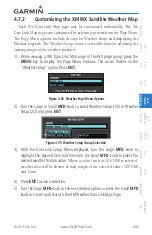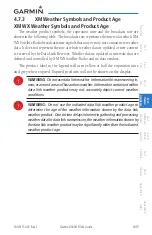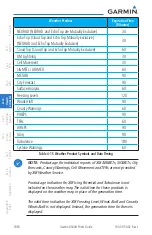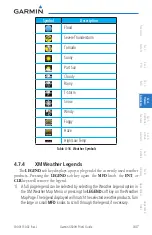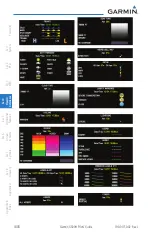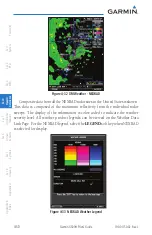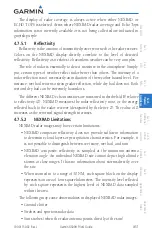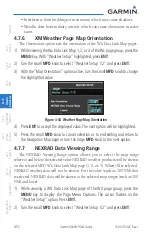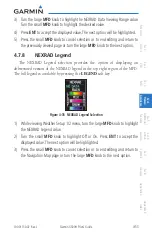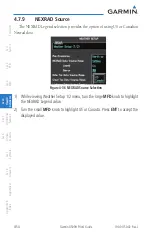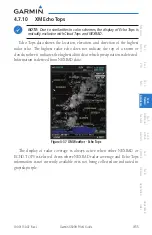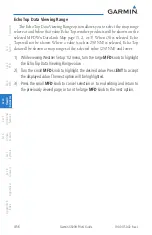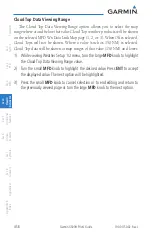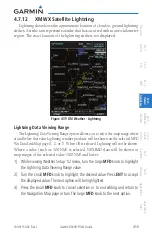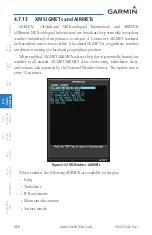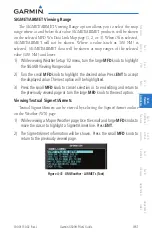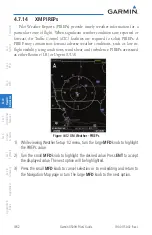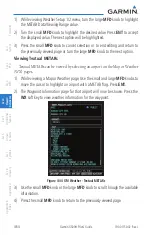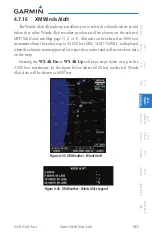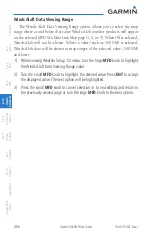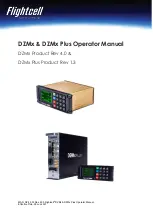
4-51
190-01150-02 Rev. J
Garmin G500H Pilot’s Guide
For
ewor
d
Sec 1
System
Sec 2
PFD
Sec 3
MFD
Sec 4
Hazar
d
Avoidance
Sec 5
Additional
Featur
es
Sec 6
Annun.
& Alerts
Sec 7
Symbols
Sec 8
Glossary
Appendix A
Appendix B
Index
The display of radar coverage is always active when either NEXRAD or
ECHO TOPS is selected. Areas where NEXRAD radar coverage and Echo Tops
information is not currently available or is not being collected are indicated in
grayish-purple.
4.7.5.1 Reflectivity
Reflectivity is the amount of transmitted power returned to the radar receiver.
Colors on the NEXRAD display directly correlate to the level of detected
reflectivity. Reflectivity as it relates to hazardous weather can be very complex.
The role of radar is essentially to detect moisture in the atmosphere. Simply
put, certain types of weather reflect radar better than others. The intensity of a
radar reflection is not necessarily an indication of the weather hazard level. For
instance, wet hail returns a strong radar reflection, while dry hail does not. Both
wet and dry hail can be extremely hazardous.
The different NEXRAD echo intensities are measured in decibels (dB) relative
to reflectivity (Z). NEXRAD measures the radar reflectivity ratio, or the energy
reflected back to the radar receiver (designated by the letter Z). The value of Z
increases as the returned signal strength increases.
4.7.5.2
NEXRAD Limitations
NEXRAD radar images may have certain limitations:
• NEXRAD composite reflectivity does not provide sufficient information
to determine cloud layers or precipitation characteristics. For example, it
is not possible to distinguish between wet snow, wet hail, and rain.
• NEXRAD composite reflectivity is sampled at the minimum antenna
elevation angle. An individual NEXRAD site cannot depict high altitude
storms at close ranges. It has no information about storms directly over
the site.
• When zoomed in to a range of 30 NM, each square block on the display
represents an area of four square kilometers. The intensity level reflected
by each square represents the highest level of NEXRAD data sampled
within the area.
The following may cause abnormalities in displayed NEXRAD radar images:
• Ground clutter
• Strobes and spurious radar data
• Sun strobes (when the radar antenna points directly at the sun)
Содержание G500H
Страница 1: ...G500H Pilot s Guide ...
Страница 365: ......

